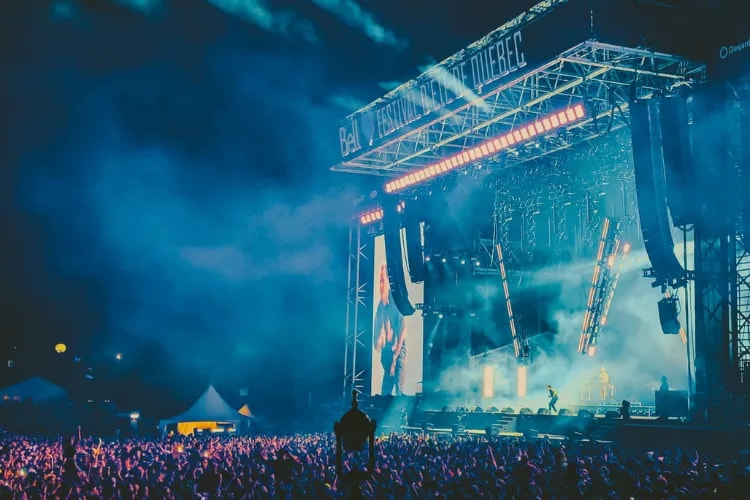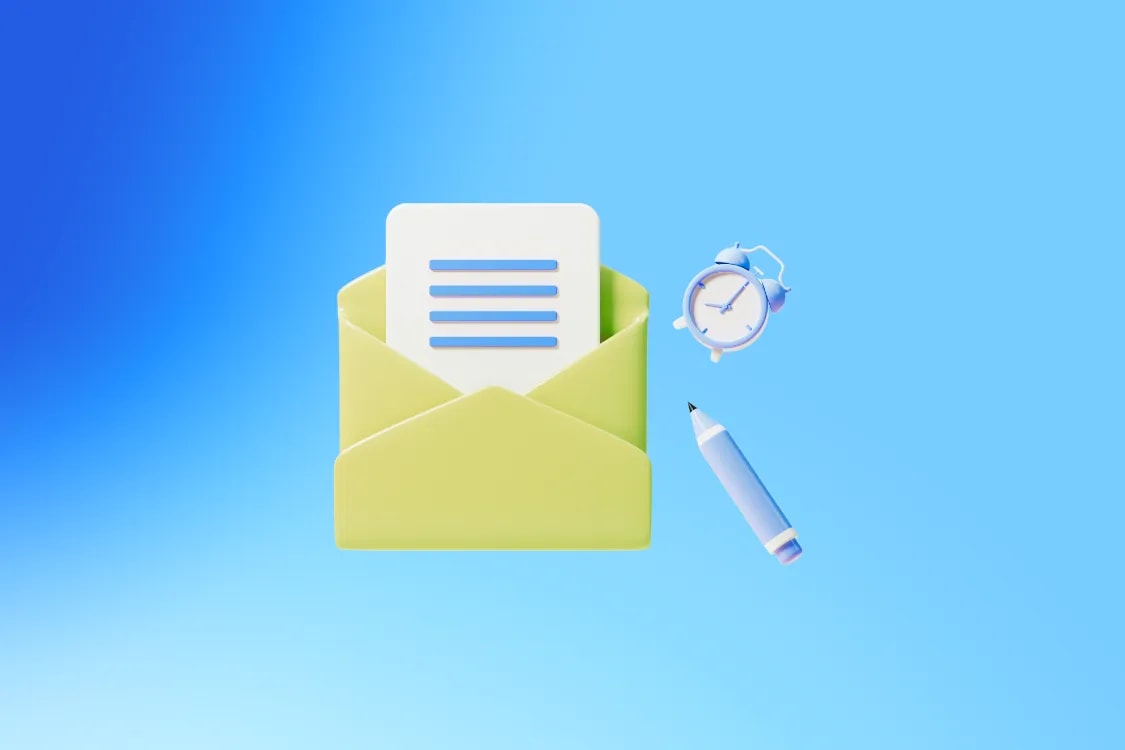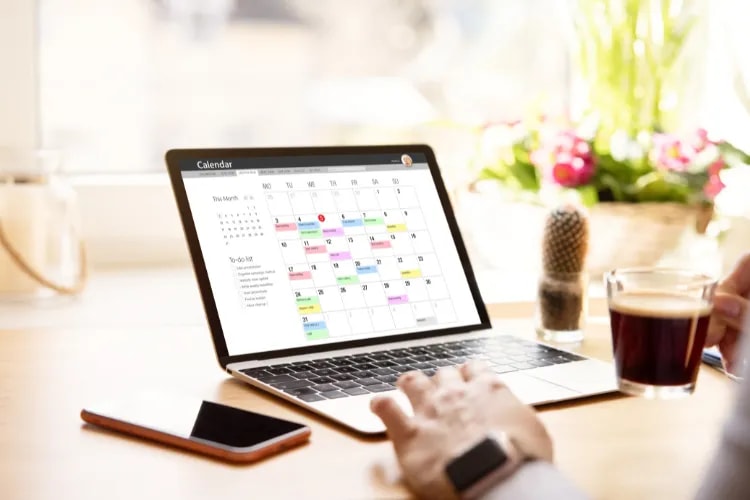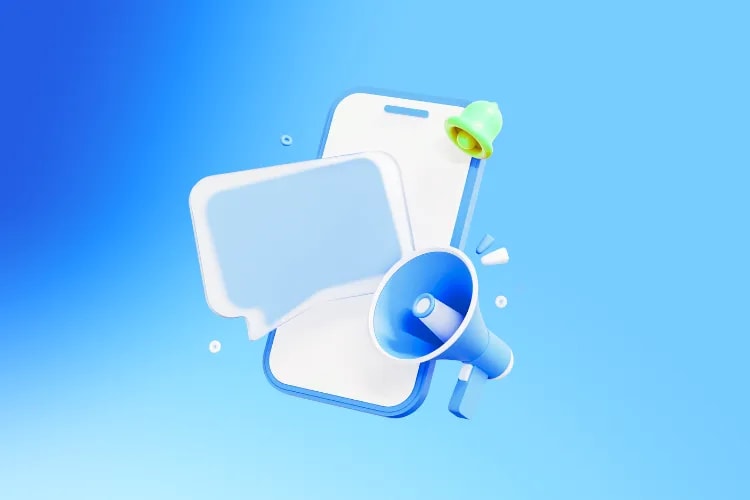
A great sponsorship letter can unlock budget, buzz, and long-term partners for your event. Brands are spending more on sponsorships, even as many leaders still wrestle with measuring ROI—meaning a crisp, benefits-forward outreach can help your proposal rise above the noise. According to industry analysis, sponsorship investment is surging despite ongoing ROI challenges, putting a premium on letters that set expectations, metrics, and next steps from the start. Source: Forrester
This guide walks you through exactly how to write a winning sponsorship letter, what to include, and three ready-to-use examples you can adapt for your next pitch. We’ll also share measurement tips sponsors care about and a simple follow-up plan that converts.
A sponsorship is a business partnership where a company provides money, goods, or services to support your event or program in exchange for agreed benefits—like access to your audience, thought-leadership roles, experiential activations, or first‑party lead capture. That’s different from a donation or grant, which typically offers recognition but not explicit commercial consideration.
Mutual value is the heart of sponsorships:
For sponsors: audience alignment, measurable engagement, brand lift, lead generation, community impact, and credible reporting.
The Loopyah Content Team shares expert insights, practical guides, and industry updates to help event organizers create unforgettable experiences and stay ahead in the event planning world.
selling
For organizers: financial support, in‑kind resources, content partners, expanded reach, and long‑term relationships.
What sponsors look for today:
Audience fit: who attends, job titles, geos, purchasing power.
Modern benefits: thought-leadership roles, curated meetings, experiential brand zones, and data/lead capture—not just logos.
Measurement: a clear KPI (e.g., qualified leads, engagement, content reach) and how you’ll report it. Nielsen’s sponsorship ROSI frameworks emphasize brand, sales, and exposure impact. Learn more
Use this checklist to make sure your sponsorship letter hits every note—while staying to one page.
Heading and Contact Information: Your organization’s name, address, phone, email, website, and social links.
Date: Always include the date you’re sending the letter.
Sponsor’s Contact Information: Address to a specific decision-maker (name, title, company, mailing address, email).
Salutation: Use a professional greeting (e.g., “Dear Ms. Rivera,”).
Introduction: In 1–2 lines, state who you are, what your event is, dates/location, and why you’re reaching out to this sponsor now.
Compelling Opening: Lead with audience fit or outcomes (“3,200 food‑obsessed locals; 41% dine out 3+ times/week”). Mirror the sponsor’s goals to signal instant relevance.
Detailed Event or Project Description: Give the essentials—purpose, audience, format, key moments, expected attendance, and why it matters this year. Keep it scannable with short sentences and metrics.

Sponsorship Levels and Benefits: Offer two to four options, but keep room to customize. Prioritize benefits sponsors value now:
Thought leadership: keynote or panel participation, workshop facilitation.
Experiential: branded lounge, demo zone, tasting bar, charging stations, or curated micro‑events.
Data and leads: opt‑in lead capture, badge scans, post‑event content syndication, and audience insights.
Visibility with context: smart signage, agenda mentions, and social content—framed around your audience’s interests, not just logo walls.
Call to Action: Ask for one clear next step (e.g., “Could we schedule a 20‑minute scoping call next week? Here are two times.”). Include a calendar link if you have one.
Closing and Signature: Thank them for considering, reaffirm fit, and sign off with your name, title, mobile, and a link to your event page.
Research Potential Sponsors: Identify companies whose values, audience, and current campaigns align with your event. Scan their press room and social feeds for clues (e.g., new product launches, DEI initiatives, sustainability goals). Then tailor your outreach accordingly.
Personalize Each Letter: Open with one sentence that mirrors their goals (“You’re expanding into the Southeast; 48% of our attendees are based in Atlanta and Charlotte”). Sponsors expect tailored proposals, not boilerplate tiers.
Quantify the Benefits: Share audience numbers, roles, engagement rates, and expected lead volume. Name the KPI that matters most to them (qualified leads, content reach, demo signups) and how you’ll measure it. For credibility, align with a post‑event report structure (audience, engagement, exposure, and sales impact signals) informed by established ROSI practices. Reference: Nielsen Sports ROSI
Keep It Concise: Aim for one page. Use a BLUF (Bottom Line Up Front) opener: who you are, why it fits, what they get, and the next step—all in the first 3–4 sentences. Short paragraphs and scannable bullets win replies.
Proofread Carefully: Typos and formatting issues erode credibility. Double‑check names, titles, dates, and links; ask a colleague to review.
“Busy executives respond to clear subject lines, a BLUF opening, short paragraphs, and a single, explicit call to action.”
Nonprofit note: Use acknowledgment language (recognizing support) rather than promotional promises to preserve “qualified sponsorship” status. When in doubt, keep benefits factual.
Now, let's turn these tips and strategies into actionable examples.
Use Case: Music, food, or cultural festivals.
Audience Fit: Local or national brands targeting lifestyle, entertainment, or F&B markets.
Benefit Focus: Experiential zones, product sampling, and on-site activations.
Example:
Subject: Partner with [Sunset Sounds Festival] to engage 12,000 music lovers this September
Dear Ms. Thompson,
I’m reaching out from Harbor Collective, producers of the Sunset Sounds Festival (Sept 6–8). Last year drew 10,400 attendees; this year we’re expanding to three stages and expect 12,000+ visitors—62% are aged 21–35, with strong engagement on TikTok and Spotify.
Given VibeDrink’s focus on Gen Z lifestyle and music culture, we see strong synergy. We’d love to collaborate on an activation that amplifies your new energy drink line while capturing opt-in leads and social buzz.
Sample benefits at a glance:
Branded chill zone with tasting station + live DJ sets (staffed by our team).
QR-linked giveaways and product sampling for the first 1,000 attendees.
Stage branding, influencer shoutouts, and tagged recap content (IG + TikTok).
Could we book a quick 15-minute call on Thursday at 11:00 or Friday at 2:00? Happy to share a deck and performance metrics from last year’s event.
With appreciation,
[Your Name], Brand Partnerships | Harbor Collective | (555) 123‑4567
Use Case: Annual gala, auction, or giving campaign.
Audience Fit: Local businesses, healthcare orgs, financial institutions.
Benefit Focus: Community impact, acknowledgment, and thought leadership.
Example:
Subject: Help fund 500 meals—be a community partner at the [Harvest Gala] this November
Dear Mr. Delgado,
On November 21, the Harvest Gala will gather 400 local leaders to fund meal delivery and nutrition services for seniors in our region. Last year, we served 380 clients—this year our goal is 500.
As a longtime supporter of community health, we’d love for Horizon Health to join us as a presenting partner. We can also spotlight your nutrition initiatives in a short fireside chat or program feature.
Sample benefits at a glance:
Gala stage acknowledgment and logo placement throughout the event.
A hosted table of 10 + behind-the-scenes tour of our kitchen facility.
Inclusion in our impact report, which is shared with donors and local media.
Can we connect for 15 minutes next Tuesday at 1:30 or Wednesday at 11:00? I’d be happy to share past impact reports and recognition examples.
Warmly,
[Your Name], Executive Director | Nourish Together | (555) 987‑6543
Use Case: Youth league, regional tournament, or amateur competition.
Audience Fit: Sporting goods, beverage brands, local retail.
Benefit Focus: Logo placement, sampling, and high local engagement.
Example:
Subject: Join us courtside—sponsor [Spring Slam] to reach 1,200 active families this April
Dear Ms. Rivera,
The Spring Slam Youth Basketball Tournament returns April 18–20 with 36 teams and over 1,200 local families attending. Last year, 91% of attendees were within a 30-mile radius, with strong brand recall from sponsor booths.
Given Courtside Co.’s emphasis on active youth and family-friendly branding, we’d love to explore a sponsorship that boosts your community visibility and encourages trial of your new product line.
Sample benefits at a glance:
Branded hydration stations on each court + opt-in giveaways.
Logo on tournament shirts, brackets, and printed programs.
Court naming rights + social mentions and post-event photo album placement.
Would a quick chat on Monday at 3:00 or Wednesday at noon work? I’d love to discuss fit and finalize activation options.
Thanks so much,
[Your Name], Tournament Director | Spring Slam | (555) 321‑7890
Use Case: B2B SaaS, startup summits, or industry-specific expos.
Audience Fit: Enterprise vendors, tech platforms, VCs.
Benefit Focus: Lead capture, thought leadership, and brand authority.
Example:
Subject: Lead the conversation on AI Ops—join [DataForward 2025] as a spotlight partner
Dear Mr. Blake,
DataForward returns to San Jose this March 5–7, bringing together 1,500+ data, engineering, and product leaders—43% hold director or VP roles and manage annual tech budgets of $3M+.
We’re inviting ApexCloud to join as a featured sponsor for our AI Ops track, tying into your recent “Next-Gen Reliability” report and product launch.
Sample benefits at a glance:
Mainstage panel + 50-person roundtable with opt-in badge scanning.
Post-event content syndication + report collaboration (co-branded).
VIP meeting program: 10 curated 1:1s based on your ICP.
Are you available for a brief scoping call Tuesday at 10:30 or Thursday at 1:00? I’d be happy to share last year’s wrap metrics and our 2025 agenda.
Best regards,
[Your Name], Head of Strategic Partnerships | DataForward | (555) 456‑7890
Use Case: Career fair, STEM showcase, graduation, or club program.
Audience Fit: Local businesses, education orgs, and parent-run companies.
Benefit Focus: Community goodwill, local branding, and family reach.
Example:
Subject: Inspire the next generation—support [STEM Discovery Day] for 600 local students
Dear Ms. Chen,
I’m writing from Bright Future Academy, where we’re hosting our annual STEM Discovery Day on May 4. We expect 600+ students, parents, and teachers—58% of our students are from underserved communities, and interest in robotics and coding has doubled year-over-year.
We’d love for EdTech Tools to join as a sponsor and help make hands-on STEM learning accessible for all.
Sample benefits at a glance:
Sponsor-hosted demo booth + hands-on coding challenges.
Logo placement on all event materials, student take-home kits, and thank-you banners.
Post-event recap shared with local media and school partners.
Can we connect briefly on Thursday morning at 9:30 or Friday at 2:00? I’d be happy to share a sample agenda and activation map.
Warmly,
[Your Name], STEM Coordinator | Bright Future Academy | (555) 246‑8100
Use Case: Mentorship program, food bank initiative, after-school program.
Audience Fit: Foundations, social impact departments, and CSR teams.
Benefit Focus: Long-term impact, partner branding, and reporting.
Example:
Subject: Partner with [City Night Market] to reach 8,500 food‑loving locals this July
Dear Ms. Nguyen,
I’m reaching out from Riverfront Events, producers of the City Night Market (July 12–13). Last year we welcomed 7,900 attendees; this year we’re expanding to 120 vendors and expect 8,500+ visitors—71% live within 10 miles and dine out 3+ times per week.
Given FreshMart’s focus on local sourcing and family‑friendly experiences, we see a strong fit. We’d love to co‑create an activation that lets you showcase seasonal products, sample new items, and capture opt‑in leads for your community newsletter.
Sample benefits at a glance:
Branded tasting bar with sustainable serviceware (we provide staffing).
Recipe card takeaway featuring your QR to join “Fresh Finds” (opt‑in lead capture).
Stage shout‑out during headline performance + inclusion in our community impact recap.
Could we schedule a 15‑minute scoping call on Tuesday at 10:00 or Thursday at 2:30? I’d love to tailor the package to your goals and confirm metrics for success.
With appreciation,
[Your Name], Partnerships Manager | Riverfront Events | (555) 555‑0199
Use Case: Happy hour, chamber event, women-in-tech meetup.
Audience Fit: Recruiting firms, local businesses, coworking spaces.
Benefit Focus: Brand exposure, product placement, and lead gen.
Example:
Subject: Connect with 250 local leaders—sponsor [Tech After Hours] this February
Dear Ms. Grant,
Tech After Hours is our quarterly mixer for professionals across design, engineering, and product roles—our February event (Feb 16) will draw 250+ attendees at Downtown Commons, with 70% from startups and growth-stage companies.
We’d love for PeopleFirst Recruiting to join as a sponsor—your team is already a go-to in the community, and this event is a great way to meet passive candidates face-to-face.
Sample benefits at a glance:
Branded lounge area + “Meet the Recruiter” speed intros.
Logo placement on event signage and RSVP page.
Mention in our post-event email (2,300+ subscribers) and photo gallery.
Are you available Thursday at 3:00 or Friday morning at 9:00 to chat options?
Cheers,
[Your Name], Event Producer | Founders Circle | (555) 753‑2920
Use Case: Webinars, summits, training series, or product showcases.
Audience Fit: SaaS tools, B2B brands, content marketers.
Benefit Focus: Content reach, session engagement, digital lead capture.
Example:
Subject: Reach 5,000+ viewers—sponsor [FutureWork Live] hybrid summit this June
Dear Mr. George,
FutureWork Live is our hybrid summit exploring workplace innovation and AI in HR—streaming live on June 11, with in-person sessions hosted in NYC. In 2024, we drew 4,200 live viewers and 6,700 total views within 30 days.
We’d love for WorkStack to join as a digital content partner—this aligns perfectly with your focus on AI-driven productivity.
Sample benefits at a glance:
Sponsored session slot with opt-in lead capture and live chat visibility.
Logo on all promotional emails (45,000 list) and streamed sessions.
Post-event content package (video clips + analytics dashboard).
Could we schedule a 20-minute call Wednesday at 10:00 or Friday at 1:00 to explore options?
All the best,
[Your Name], Virtual Events Lead | WorkTribe Media | (555) 889‑3344
Generic letters: one‑size‑fits‑all tiers without audience fit or tailored benefits.
Lack of clarity: fuzzy event details, no dates, no audience profile, or vague benefits.
Overpromising: benefits you can’t deliver, or hard ROI guarantees you can’t substantiate.
Poor grammar and formatting: typos, inconsistent fonts, missing contact info.
No follow‑up: sending once and hoping. Schedule your follow‑up cadence the moment you hit send.
Build relationships year‑round: share useful content, invite input on programming, and debrief quickly post‑event to set up renewals.
Offer unique opportunities: co‑create activations tied to the sponsor’s goals (product sampling, curated roundtables, pilots or trials).
Track and measure results: commit to 3–5 KPIs in the letter (e.g., qualified leads, session engagement, reach, sentiment) and deliver a concise wrap report within 10 business days.
Make it easy to say yes: propose two meeting times and include a direct calendar link.
Show gratitude: thank sponsors publicly and privately—then highlight results and community impact.
A winning sponsorship letter is short, personalized, and metrics‑forward. Lead with audience fit, spell out modern benefits (thought leadership + experiential + data), and make your next step frictionless. Sponsors are leaning into partnerships, but they expect clarity and measurement—so promise a concise wrap report and deliver it quickly.
Ready to turn this into action? Draft your sponsorship letter using the templates above, quantify the value you offer, and line up a quick scoping call. With a strong first impression and disciplined follow‑up, you’ll convert more partners and grow revenue season after season.
Want help promoting your sponsored experiences and driving attendance? Explore our guide to creative event promotion ideas and our complete event planning checklist to keep everything on track.
Further reading on market momentum and measurement: sponsorship spending is growing even as ROI remains a top challenge—another reason to set metrics in your very first message. Forrester analysis

selling









selling
selling
selling
marketing
marketing
marketing
planning
planning
planning